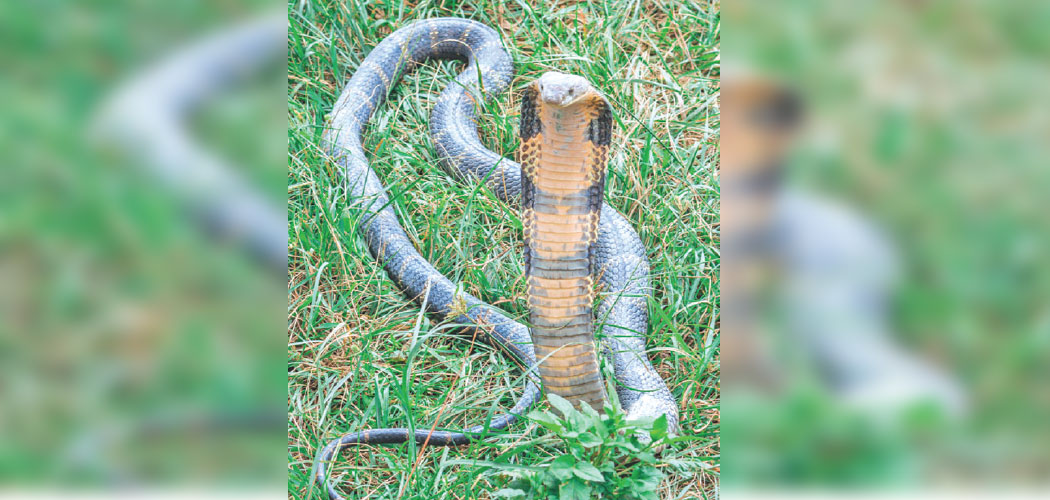
SATV 10 July, Kathmandu: Rising temperatures are pushing venomous snakes from Nepal’s Tarai plains into the country’s hilly regions, health experts have warned. Species like kraits, cobras, and Russell’s vipers, once confined to warmer lowlands, are now being reported in higher altitudes, raising concerns about public health and preparedness.
“This upward migration of snakes is directly linked to climate change,” claimed Dr. Prakash Budhathoki, Spokesperson for the Ministry of Health and Population. “Warmer temperatures at higher altitudes are facilitating the movement of lowland venomous snakes. Clinical records from snakebite patients confirm the presence of Tarai-origin species in the hills,” he said.
Dr. Budhathoki said that this ecological shift demands improved healthcare access in hilly districts, where treatment for snakebites remains limited.
Snakebites are still more frequent in the Tarai, but the lack of comprehensive data blurs the full picture. The World Health Organization (WHO) estimates that around 3,000 people die annually from snakebites in Nepal, with 37,000 bite cases recorded each year. In contrast, the Ministry of Health reported only 150 deaths last year, and over 150 fatalities have already been reported in the current fiscal year.
In the last fiscal year, 8,181 snakebite cases were recorded, of which 1,488 were venomous, while 6,693 were non-venomous. These numbers only reflect hospital visits, many cases in remote areas go unreported, according to the doctors.
“This is not just a case of a cobra being spotted in Lalitpur of the Kathmandu Valley,” said Dr. Sher Bahadur Pun, Clinical Research Coordinator at Sukraraj Tropical and Infectious Disease Hospital, Teku. “It can be taken as an early sign that the cobra is gradually adapting itself to Kathmandu’s environment.”
In another instance, a king cobra was sighted in the Gaurishankar Conservation Area, spanning Dolakha, Ramechhap, and Sindhupalchok districts, back in 2018. “The king cobra had even laid eggs there,” Dr. Pun noted, indicating it has adapted to the region, which reaches 7,181 metres above sea level. The presence of such species at these heights is extremely rare and merits scientific investigation.
At Kathmandu’s Teku Hospital (Sukraraj Tropical and Infectious Disease Hospital), the only facility in the valley treating snakebite cases, seven to 15 patients arrive daily during the hot months, a figure that jumps to 25 per day during the monsoon, according to Binaya Khadka, information officer at the hospital.
From January 1 to mid-July 2025, the hospital recorded 378 snakebite cases, with patients arriving from districts such as Nuwakot, Dhading, Makwanpur, and other areas linked to the Kathmandu Valley. “There have been no deaths among them,” Khadka added.
Dr. Hemant Chandra Ojha, chief of the Zoonotic and Communicable Disease Control Section at the Epidemiology and Disease Control Department (EDCD), echoed the climate warning. “Rising global temperatures are forcing animals to shift habitats. Just like dengue and malaria have moved to higher altitudes, venomous snakes are following suit,” he said. “Some are even being transported unintentionally with goods from the lowlands.”
Nepal is home to 89 snake species, of which 17 are venomous. Among the deadliest are the green pit viper and king cobra, both found in hilly regions. However, only 106 health centres nationwide specialise in snakebite treatment, and many local clinics lack the capacity to manage envenomation cases.
Nepal currently relies on polyvalent antivenom, which does not cover all native venomous species. This limitation has led to fatalities even after hospital admission. The EDCD confirmed that species like the green pit viper and Gurbe snake in the hills produce particularly potent venom.
Experts say only 20 per cent of venomous snakebite victims reach hospitals in time, with most coming from economically disadvantaged rural areas. Timely treatment—ideally within one hour—is critical for survival.
Dr. Budhathoki advised that to prevent snakebites, public should keep homes clean, avoid sleeping on the floor, use mosquito nets, and avoid storing litter, especially during monsoon and warmer seasons, when snakes are most active.



















